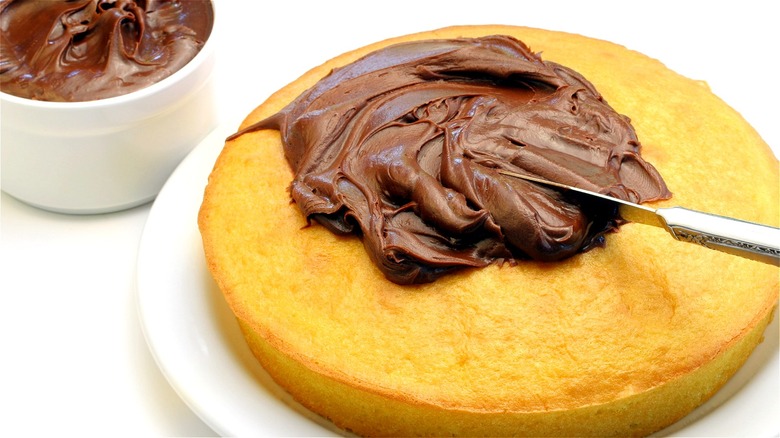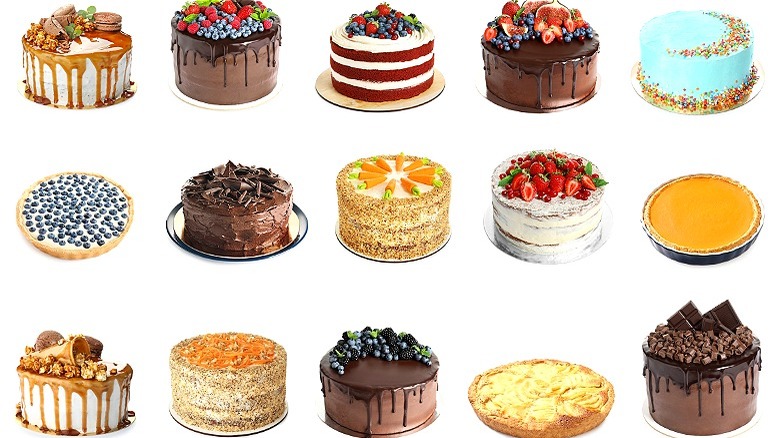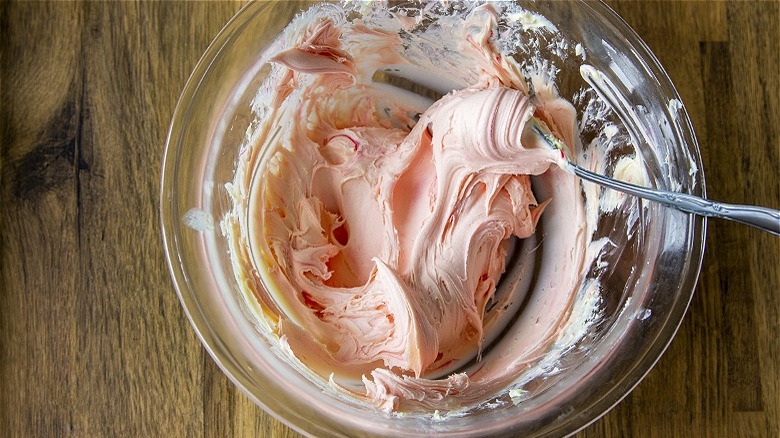How To Store Leftover Frosting After Making A Cake
For some people, flour, sugar, eggs, and butter doesn't always transform into a delectable cake until rich frosting is stacked between the resulting layers, encasing what has now become one of America's favorite desserts. While ice cream reigned supreme in one 2015 Yahoo survey on dessert popularity, cake came in second place as the most favored dessert in the U.S., surpassing cookies, pie, candy, and fruit. And people really do care about that creamy frosting accompaniment–sometimes even more than the cake itself. In a 2020 BuzzFeed poll asking readers to choose between frosting or cake, 45% of respondents (with over 80,000 votes) believed frosting was the best part of the confection.
Before you add a creamy addition to your 2-layer chocolate cake recipe, you might be curious to know what classifies as proper frosting. According to MasterClass, while the icing is a thinner complement to cookies made usually of powdered sugar and water, frosting is an airy topping of whipped sugar and butter, often complemented by additional add-ins of flavor extracts or cocoa. The frosting is best for cakes since the whipped consistency keeps its shape, making this fat and butter mixture easily spreadable. If you make a big batch and end up with more frosting than you allotted, you can store the leftovers. Yet before we get into the specificities of frosting storage, let's uncover the wide range of frosting varieties.
What are the most common varieties of cake frosting?
If you want to try something other than the tried and true buttercream, you could opt for cream cheese frosting which is almost identical to buttercream apart from the addition of rich cream cheese.
Ganache frosting typically contains quality chocolate, sugar, and heavy cream like Ina Garten's classic recipe, via Food Network. While ganache frosting tends to firm up quite quickly, meringue frosting, made with egg whites, sugar, and cream of tartar will lose its shape considerably after a day or two, per The New York Times. Glazes are a thinner frosting variety and usually contain only confectioners' sugar, milk, and vanilla.
If you plan to frost your cake ahead of time, you can follow Better Homes & Garden's recommendations depending on the size of the cake you're planning to bake. Yet to make sure you have enough, Better Homes & Gardens suggests always making a little more than you think you'll need. If you do end up with too much, how should you store your leftover frosting?
How you should store leftover frosting depends on the kind you use
What do you do with the extra cup of whipped frosting that didn't make it on your finished product? If you decided to go with buttercream, Wilton recommends storing any extras in your refrigerator (away from fragrant foods) for up to a week. When you want to use the extras, just bring the contents to room temperature and whip for a minute or two before applying the thawed confection to your next sweet treat.
If you're not a fan of buttercream, RecipeTips.com has graciously outlined all the storage recommendations for every type of cake frosting on their website. Although meringue-based frosting is not recommended for storage, certain varieties like cream cheese frosting and fruit-based frosting can be refrigerated for up to two weeks. As for the boiled frosting, ganache, and fondant, all of those varieties are recommended to be stored in airtight containers at room temperature, per RecipeTips.com. While fondant can last on your counter for up to two months, ganache lasts a mere 48 hours.
For store-bought frosting, Taste of Home advises simply to pop the container's lid back on and keep the leftovers in your refrigerator for up to four weeks. Whichever frosting you choose, just be sure to follow the specific storage guidelines, and most importantly, don't let any delicious frosting go to waste.


